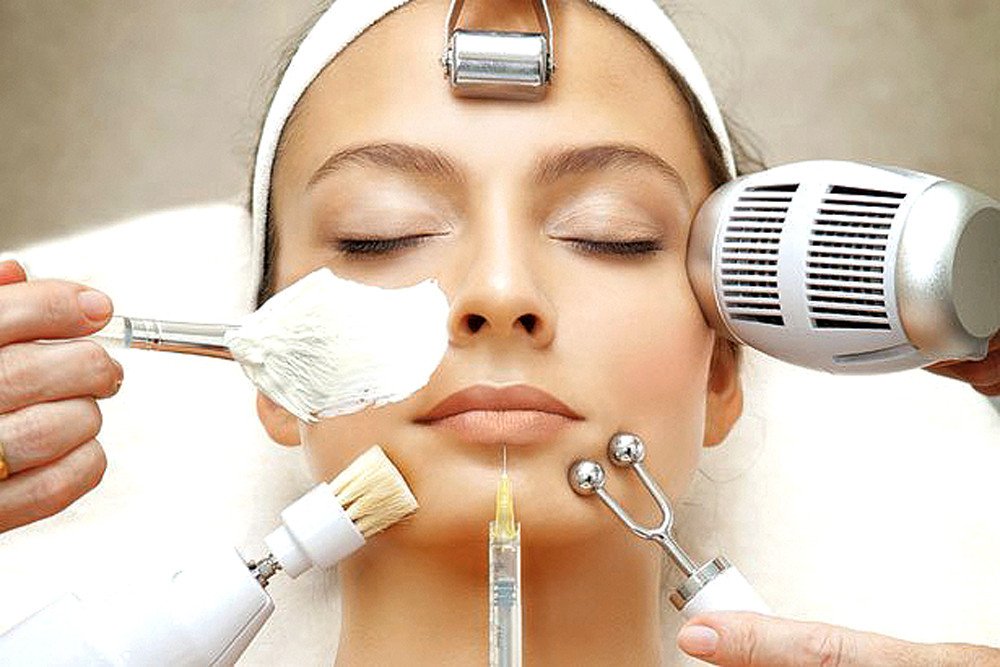
Chemical Peels
Chemical peels can improve the skin’s appearance. In this treatment, a chemical solution is applied to the skin, which makes it “blister” and eventually peel off. The new skin is usually smoother and less wrinkled than the old skin.
Generally, fair-skinned and light-haired patients are better candidates for chemical peels. If you have darker skin, you may also have good results, depending upon the type of problem being treated. But you also may be more likely to have an uneven skin tone after the procedure.
Skin sags, bulges, and more severe wrinkles do not respond well to chemical peels. They may need other kinds of cosmetic surgical procedures, such as laser resurfacing, a facelift, brow lift, eyelid lift, or soft tissue filler (collagen or fat). A dermatologic surgeon can help determine the most appropriate type of treatment for you.
You can get a chemical peel in a doctor's office or in a surgery center. It's an outpatient procedure, meaning there's no overnight stay.
The professional who does your peel will first clean your skin thoroughly. Then they will apply one or more chemical solutions -- such as glycolic acid, trichloroacetic acid, salicylic acid, lactic acid, or carbolic acid (phenol) -- to small areas of your skin. That creates a controlled wound, letting new skin take its place.
Depending upon the type of chemical peel, a reaction similar to sunburn occurs following the procedure. Peeling usually involves redness followed by scaling that ends within three to seven days. Mild peels may be repeated at one to four-week intervals until you get the look you're after.
Medium-depth and deep peeling may result in swelling as well as blisters that may break, crust, turn brown, and peel off over a period of seven to 14 days. Medium-depth peels may be repeated in six to 12 months, if necessary.
After treatment, you may need bandages for several days on part or all of the skin that was treated.
You'll need to avoid the sun for several months after a chemical peel since your new skin will be fragile.
Some skin types are more likely to develop a temporary or permanent color change in the skin after a chemical peel. Taking birth control pills, subsequent pregnancy, or a family history of brownish discoloration on the face may make that more likely. There is a low risk of scarring in certain areas of the face. Some people may be more likely to scar. If scarring does happen, it can usually be treated with good results.
A chemical peel is a skin-resurfacing procedure. Depending on the issues you're addressing with the procedure, you'll choose a chemical peel in one of three depths:
- Light chemical peel. A light (superficial) chemical peel removes the outer layer of skin (epidermis). It's used to treat fine wrinkles, acne, uneven skin tone and dryness. You might have a light peel every two to five weeks.
- Medium chemical peel. A medium chemical peel removes skin cells from the epidermis and from portions of the upper part of your middle layer of skin (dermis). It's used to treat wrinkles, acne scars and uneven skin tone. You might need to repeat the procedure to achieve or maintain the desired result.
- Deep chemical peel. A deep chemical peel removes skin cells even deeper. Your doctor might recommend one for deeper wrinkles, scars or precancerous growths. You won't need repeat procedures to get the full effect.
Book Your Free Consultation Now
Other Treatment
-
Open Pore Treatments
The term ‘open pores’ refers to enlarged skin pores that have become more noticeable over time. The pores on the skin allow it to ‘breathe’ by releasing the sebum or natural oil onto the surface.
-
Under Eye Treatment
Dark circles under the lower eyelids are common. Often accompanied by bags, having dark circles under your eyes may invite unwanted comments about how tired you look.
-
Lip Lightening
Lip darkening is a common issue that both men and women face. From smoking to allergies and dehydration, there are many reasons behind the lip losing its natural color.
Gallery









